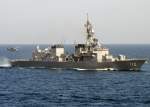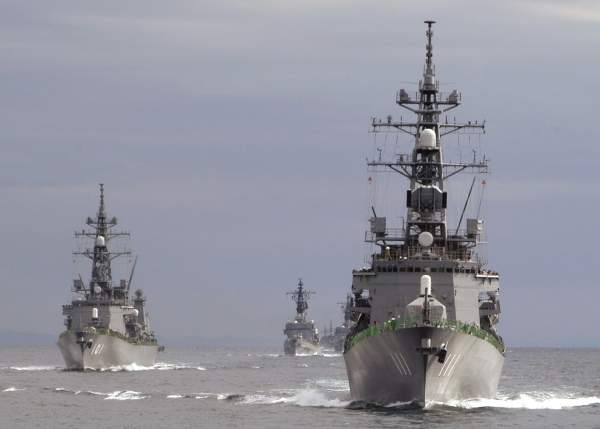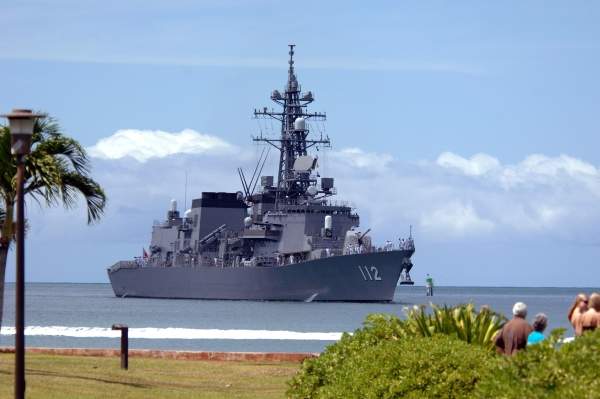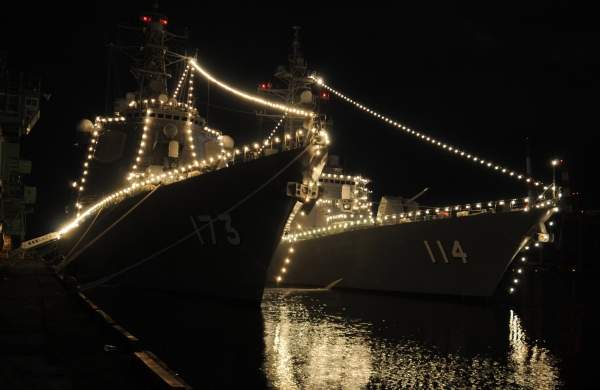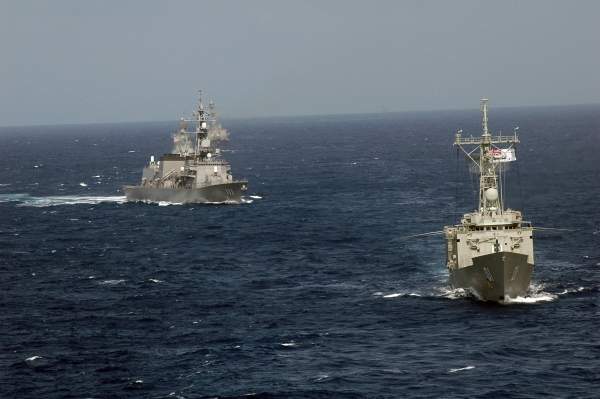Takanami Class destroyers are in service with the Japan Maritime Self Defence Force (JMSDF). Five destroyers were built by Mitsubishi Heavy Industries (MHI) and IHI Corporation between 2000 and 2004. Takanami Class is preceded by Murasame Class and succeeded by Akizuki Class destroyers.
The keel for the first ship in the class, Takanami (DD-110), was laid down in April 2000. It was launched in July 2001 and commissioned in March 2003. Onami (DD-111) was laid in May 2000, launched in September 2001 and commissioned in March 2003.
Makinami (DD-112) was laid in July 2001, launched in August 2002 and commissioned in March 2004. The keel for Sazanami (DD-113) was laid down in April 2002. It was launched in August 2003 and commissioned in February 2005.
The last ship in the class, Suzunami (DD-114), was laid in September 2003. It was launched in August 2004 and commissioned to JMSDF in February 2006. All of the ships are named after World War II destroyers.
The Takanami Class destroyers are capable of conducting anti-submarine warfare (ASW) and anti-surface warfare (ASuW) operations.
Takanami Class design features
Takanami Class incorporates a modified design based on the Murasame Class. It has slightly heavier displacement over its predecessor.
The destroyer is also fitted with larger main gun and advanced fire control system and sonar system. The power plant is based on four dual-axis gas turbine propulsion system.
The ship has an overall length of 151m, beam of 17.4m, depth of 10.9m and a draft of 5.3m. The full load displacement of the vessel is 4,650t. Takanami Class can complement a crew of 175.
Command and control of the Japanese destroyers
The Takanami Class is equipped with OYQ-9 CDS (combat direction system). OYQ-9 CDS consists of AN/UYK-43, AN/UYK-44 and AN/UYQ-21 workstations. The maritime operation force system onboard provides enhanced network capability to the ships.
Weapon systems onboard
The Takanami Class destroyers are fit with an Mk48 VLS (vertical launching system) for Evolved Sea Sparrow surface-to-air missiles. The Mk41 VLS installed on the ship can fire RUM-139 VL ASROC (anti-submarine rockets).
The Type 90 (SSM-1B) anti-ship missile onboard carries a 260kg warhead for a maximum range of 200km. The ship has two triple-mount Type 68 anti-submarine torpedo tubes, firing six Mk46 ASW torpedoes.
The main gun fitted forward is an Oto Melara 3 (now Oto Breda) 127mm, 54 calibre, compact gun. It can fire 40 rounds a minute at a range of 30km. The range can be extended to 100km with guided VOLCANO ammunition.
The close in air defence is provided by two Phalanx 20mm close-in weapons system (CIWS) mounted on the vessel. The Phalanx CIWS is used to defend incoming anti-ship missiles and low flying aircraft.
Sensors / radar systems
The sensor suite consists of OPS-28D surface search radar, OPS-24 3-D air-search radar and OPS-20 navigation radar. The OPS-28 is the Japanese equivalent of the American TAS Mk 23. The ship is also fitted with OQS-5 bow mounted medium frequency sonar and OQR-2 TASS (towed array sonar system).
Aircraft landing capabilities
The Takanami Class has an aft helicopter deck and hangar to allow the operations of a single SH-60J ASW helicopter. The embarked helicopter is deployed in anti-submarine patrol missions.
Countermeasure technology
The Mk36 six-barrelled super-rapid blooming offboard chaff launchers fitted on the vessel are capable of firing chaff or infrared decoys to deceive incoming anti-ship missiles.
Other electronic warfare includes the NOLQ-3 intercept or jammer and a SLQ-25 Nixie acoustic torpedo decoy system.
The Takanami Class is powered by a combined gas turbine and gas turbine (COGAG) propulsion system.
Two General Electric LM2500 boost gas turbines and two Rolls-Royce Sprey SM1C cruise gas turbines driving two shafts generate a total power output of 60,000ps.
The propulsion system provides a maximum speed of 30kt.
The Global Naval Surface Combatants and Warfare Systems Market 2011-2021
This project forms part of our recent analysis and forecasts of the global naval surface combatants and warfare systems market available from our business information platform Strategic Defence Intelligence. For more information click here or contact us: EMEA: +44 20 7936 6783; Americas: +1 415 439 4914; Asia Pacific: +61 2 9947 9709 or via email.

